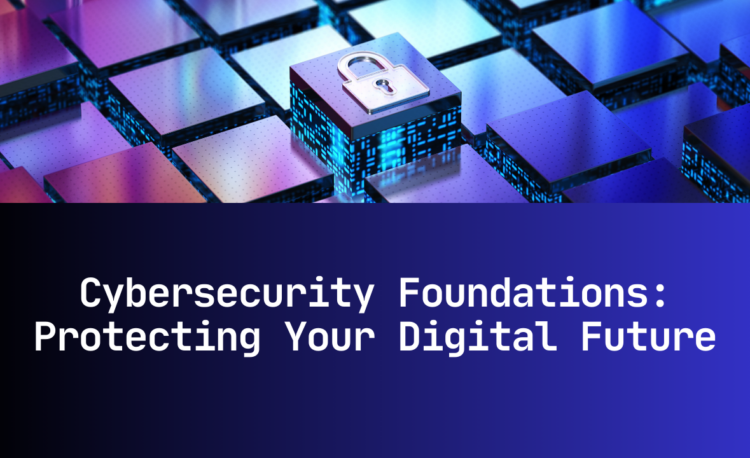In the rapidly evolving digital landscape, cybersecurity has become a critical concern for individuals and organizations alike. As we embrace digital transformation, the importance of protecting our digital assets from cyber threats cannot be overstated. This article delves into the significance of cybersecurity in digital transformation, explores key cybersecurity frameworks, and provides practical insights into implementing robust security measures.
The Importance of Cybersecurity in Digital Transformation
Digital Transformation and Cybersecurity
Digital transformation refers to the integration of digital technology into all aspects of a business, fundamentally altering how organizations operate and deliver value to customers. This transformation enhances efficiency, drives innovation, and improves customer experiences. However, it also introduces new vulnerabilities, making cybersecurity a top priority.
Cyber Threats in the Digital Age
The modern threat landscape is vast and varied, posing significant risks to digital assets. Some common cyber threats include:
- Malware: Malicious software such as viruses, worms, ransomware, and spyware that can infect and damage systems.
- Phishing: Deceptive attempts to obtain sensitive information by disguising as trustworthy entities in electronic communications.
- DDoS Attacks: Distributed Denial of Service attacks that overwhelm networks or websites with traffic, rendering them unavailable.
- Insider Threats: Security risks originating from within the organization, often involving employees or former employees with access to sensitive information.
- Advanced Persistent Threats (APTs): Prolonged and targeted cyberattacks where an intruder remains undetected within a network.
The Role of Cybersecurity in Protecting Digital Assets
Data is one of the most valuable assets for any organization. Protecting data from unauthorized access, breaches, and leaks is paramount. Effective cybersecurity measures ensure that sensitive information, such as customer data, financial records, and intellectual property, remains secure. Furthermore, robust cybersecurity practices help maintain business continuity, ensuring critical systems and processes remain operational even in the event of an attack, thereby protecting the organization’s reputation and maintaining customer trust.
Introduction to Cybersecurity Frameworks
Cybersecurity frameworks provide structured guidelines and best practices for managing and reducing cybersecurity risk. These frameworks help organizations create comprehensive cybersecurity programs that protect against threats and ensure compliance with regulations. Let’s explore some of the most widely recognized cybersecurity frameworks.
NIST Cybersecurity Framework
The National Institute of Standards and Technology (NIST) Cybersecurity Framework is one of the most widely adopted frameworks globally. It provides a policy framework of computer security guidance for how private sector organizations can assess and improve their ability to prevent, detect, and respond to cyberattacks.
Key Components of the NIST Framework:
- Identify: Develop an organizational understanding to manage cybersecurity risk to systems, assets, data, and capabilities.
- Protect: Develop and implement appropriate safeguards to ensure the delivery of critical infrastructure services.
- Detect: Develop and implement appropriate activities to identify the occurrence of a cybersecurity event.
- Respond: Develop and implement appropriate activities to take action regarding a detected cybersecurity incident.
- Recover: Develop and implement appropriate activities to maintain plans for resilience and to restore any capabilities or services that were impaired due to a cybersecurity incident.
ISO/IEC 27001
ISO/IEC 27001 is an international standard for managing information security. It provides a systematic approach to managing sensitive company information, ensuring it remains secure.
Key Elements of ISO/IEC 27001:
- Information Security Management System (ISMS): Establish, implement, maintain, and continually improve an ISMS.
- Risk Assessment: Identify and assess risks to the organization’s information security.
- Security Controls: Implement appropriate security controls to mitigate identified risks.
- Continuous Improvement: Regularly review and improve the ISMS to adapt to changing security threats and business needs.
CIS Controls
The Center for Internet Security (CIS) Controls are a set of best practices for securing IT systems and data. They are a prioritized set of actions that collectively form a defense-in-depth set of best practices that mitigate the most common attacks against systems and networks.
Key CIS Controls:
- Inventory and Control of Hardware Assets: Actively manage all hardware devices on the network.
- Inventory and Control of Software Assets: Actively manage all software on the network.
- Continuous Vulnerability Management: Continuously acquire, assess, and take action on information regarding new security vulnerabilities.
- Controlled Use of Administrative Privileges: Manage the use, assignment, and configuration of administrative privileges.
Implementing Cybersecurity Frameworks
Implementing a cybersecurity framework involves several steps. It’s important to tailor the framework to the specific needs and context of the organization.
Step 1: Assess Current Security Posture
Begin by evaluating the organization’s current cybersecurity measures. Identify strengths, weaknesses, and gaps in the existing security infrastructure. This assessment provides a baseline for improvement.
Step 2: Define Security Objectives
Based on the assessment, define clear security objectives aligned with the organization’s goals and risk appetite. These objectives guide the development and implementation of the cybersecurity program.
Step 3: Develop and Implement Controls
Implement the necessary controls and practices as defined by the chosen cybersecurity framework. This includes technical controls (e.g., firewalls, encryption), administrative controls (e.g., policies, procedures), and physical controls (e.g., access control systems).
Step 4: Monitor and Respond
Continuously monitor the security environment for potential threats and vulnerabilities. Implement processes for detecting, responding to, and recovering from security incidents. Regularly test and update incident response plans.
Step 5: Review and Improve
Regularly review and assess the effectiveness of the cybersecurity program. Use insights from monitoring and incident response activities to improve controls and processes. Adapt to new threats and changing business needs.
Conclusion
In an increasingly digital world, cybersecurity is essential for protecting valuable data, maintaining business continuity, and complying with regulations. By understanding the importance of cybersecurity in digital transformation and adopting robust cybersecurity frameworks, organizations can build resilient defenses against cyber threats. Investing in cybersecurity is not just about safeguarding information; it’s about ensuring the trust and reliability that underpin our digital future.

